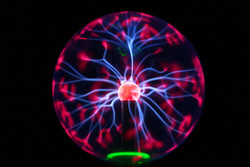Plasma propulsion using new concepts
The main idea behind the EU-funded project NEPTUNE (New generation of ion sources: From deep space missions to upstream nano-technologies) was to accelerate ions and electrons extracted from a low-temperature plasma using a radio-frequency gridded system. This new concept can provide thrust without the need for additional current or charge neutralisation. Specifically, the self-bias effect of a radio-frequency voltage applied to the grids is rectified by plasma creating a constant electrical field accelerating the ions. At the same time, the plasma potential oscillations allow electrons to be extracted shortly after the charge sheet collapses. The downstream plume or beam is mostly composed of fast neutral particles with a low density of charged particles. The challenging part of the NEPTUNE project was to develop new plasma beam diagnostic tools. This would require a retarding electric field energy analyser, a short matched dipole for impedance measurements and a multi-channel charge probe. The characterisation of different ion and electron extraction schemes allowed detailed mapping of the operating parameters. A continuous ion-ion beam generated at low energies was found to be suitable for deep reactive ion etching of microelectronics and surface treatment of lithium-sulphur battery electrodes. On the other hand, ion-ion extraction combined with high-energy acceleration could prove useful for space debris removal. The most attractive application of the NEPTUNE concept for alternative ion-electron extraction and acceleration from a low-temperature plasma is in space propulsion. It has already been implemented in the gridded ion thruster -the plasma propulsion with electromagnetic gases (PEGASUS). This method significantly improved system efficiency while being cost-effective in terms of mass and volume. After obtaining adequate proof-of-concept, the NEPTUNE source of flowing plasma was patented in 2014.







